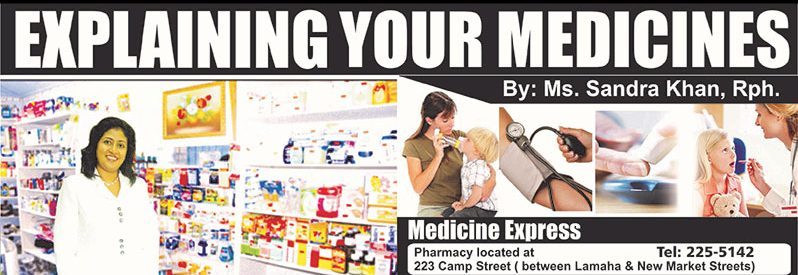TO KEEP the flame burning on the discussions and sensitisation of getting anti-malaria efforts back on track for the most affected countries, participants and stakeholders were urged on November 4, 2022, via a Pan American Health Organisation (PAHO)-hosted webinar, to urgently play an active role in their countries’ strategic responses.
In spite of the COVID-19 pandemic, Guyana had forged ahead since April 2021 with an aggressive campaign, “Reaching the Zero Malaria Target”, according to the Department of Public Health. The disruptions due to the pandemic, along with the heightened mining activities over the previous five years, had contributed to an increase of 46 per cent of cases.
This year, however, a breakthrough collaboration with Harvard University had heartened the ambitious view that we may meet our country’s target five years ahead of time.
According to the World Health Organisation (WHO) in April 2022, Guyana accounts for three per cent of the total cases of the Americas, which equates to 20,000 annually, and is found predominantly in five out of the ten administrative regions. These areas are within the high-traffic hinterland region, where the primary economic activities are logging, and gold and diamond mining. Hence, malaria is labelled as an occupational hazard.
In Volume Five of the Lancet, dated October 2021, it was inferred that the combination of climatic conditions, along with gold mining activities contributed to the prevalence of malaria, predominantly falciparum malaria, which was found to dominate during 2008 to 2014. The number of malaria cases correlated to the gold prices, because heightened mining activities created more traffic within those zones.
In Guyana, some of the challenges faced when dealing with the prevention, diagnosis and treatment are the accessibility to treatment sites, due to geographical constraints and the high illiteracy rates of the affected population. So, as part of the strategic campaign to reduce malaria by 75 per cent by the year 2025, and to a further 90 per cent by 2030, training to use rapid-test kits, treating simple cases and reporting data commenced in 2016 in several regions.
Those trained are not medical persons, but mostly those people who tend to stay within the communities, such as camp managers, camp cooks, shop owners and village leaders. Early detection and treatment helps to break the transmission rates, and hence the actual number of infected persons.
The campaign of “Little Mosquito, Big Problem” was launched in 2020, using social media, radio skits, television advertisement and cricket adverts. We are all familiar with the humorous creole ‘advert’ on television played by popular local comedians who placed emphasis on seeking treatment early, instead of “boiling bush” because his wife “Love da car bad!”
Also, sensitisation on the distribution of “free” insecticide-treated bed nets and how to properly take care of these resources were done. Within coastal communities, fogging activities were done as a prevention mechanism, since the anticipated rainy season combined with heat and high humidity are also a breathing ground for mosquitos.
In July 2022, WHO indicated, globally, that during 2010 to 2019, 78 countries showed mosquito resistance to one out of four classes of insecticide as vector control, whilst 29 countries showed mosquito resistance to all main classes of insecticide used in spraying.
Additionally, WHO recommended, since October 2021, an approved malarial vaccine for use in children living in areas with high prevalence of P. falciparum. This vaccine has been piloted since 2019 in three African countries, and was shown to prevent disease progression to severe status. According to the 2021 World Malarial Report, four of the African countries account for over half of the malarial deaths. Although safety has been established, there are hurdles with compliance, especially to administer the fourth scheduled dose.
The first line of the treatment protocol recommended for uncomplicated malaria is the artemisinin-based combination drugs. Like all other drugs, this class of drugs were initially only available by the brand, Coartem. However, due to stockouts and cost barriers, an alternative brand, Artefan, which is more affordable, became available on the market. From several comparative studies, Artefan was found to be equivalent and as effective as Coartem, and, hence, was approved for use. Since artemisinin derivatives have been officially in use since 2004 in Guyana, a watchful eye is kept for resistance.
Therefore, Sentinel site surveillance, through PAHO, the Pasteur Institute and Harvard T.H. Chan School of Public Health have collaborated since 2010 to spot any resistance to such compounds, which, to date, there has been none in Guyana. If resistance develops, this would be a major threat to the aim of malaria eradication.
However, the malaria drug-resistance situation is different in Africa, and mirrors the threat of resistance with other antimicrobials such as antibiotics. Hence, at the November 18 webinar this year, sponsored by PAHO, the new anti-malarial drug resistance strategy for Africa was launched. This took place to synchronise with World Antimicrobial Awareness Week.
For further discussion, contact the pharmacist of Medicine Express PHARMACY, located at 223 Camp Street, between Lamaha and New Market Streets. If you have any queries, comments or further information on the above topic, kindly forward them to medicine.express@gmail.com or send them to 223 Camp Street, N/burg. Tel #225-5142.



.jpg)








